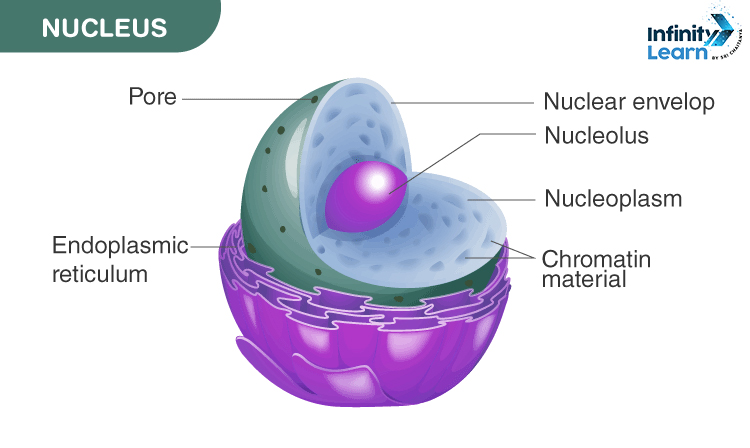
Courses

By Shailendra Singh
|
Updated on 4 Dec 2024, 11:35 IST
A nucleus diagram for Class 9 shows the nucleus of a cell. The nucleus is like the cell’s control center. It holds DNA, which tells the cell what to do. The diagram shows the nuclear membrane, which is like a protective shell around the nucleus. Inside, there’s nucleoplasm where the DNA lives. Also, there’s the nucleolus, which makes ribosomes, and chromatin, made of DNA and proteins. This diagram helps students see how the nucleus works in a cell.
The nucleus is like the brain of a cell, controlling all its activities and functions. It’s a small, round structure found in the center of most cells, and it’s where the cell’s genetic material, called DNA, is stored. Think of it as the control center of the cell, directing everything from growth and reproduction to how the cell interacts with its environment. In Class 9 Biology, the concept of Nucleus plays a important role in understanding the structure and function of cells.
Don’t Miss
A nucleus diagram is useful for learning about its structure and functions. This nucleus diagram for class 9 helps in understanding how these parts work together. In this article, we’ll explore each part and what it does with the help of a nucleus diagram.

Nucleus Components and Their Roles:
The nucleus, often called the “control center” of the cell, has key roles:
Also Read: The Fundamental Unit of Life Class 9 Notes


The nucleus is the central organelle found in eukaryotic cells, including those studied in Class 9 biology. It serves as the control center of the cell, containing the cell's DNA and regulating gene expression.
You can find diagrams of the nucleus for Class 9 biology in textbooks, online educational resources, or through educational websites like Infinity Learn specifically designed for Class 9 science curriculum.
The nuclear envelope, also known as the nuclear membrane, surrounds the nucleus and separates it from the rest of the cell. Its significance lies in controlling the movement of materials in and out of the nucleus, thus regulating gene expression and protecting the DNA inside.
The nucleolus is prominently shown in the nucleus diagram because it plays a crucial role in ribosome assembly, which is essential for protein synthesis in the cell. It appears as a distinct structure within the nucleus due to its involvement in producing ribosomal RNA (rRNA) and assembling ribosomal subunits.
Nuclear pores are essential structures depicted in the nucleus diagram as they facilitate the exchange of molecules, such as RNA and proteins, between the nucleus and the cytoplasm. They play a crucial role in regulating gene expression and cellular functions by controlling the passage of molecules in and out of the nucleus.